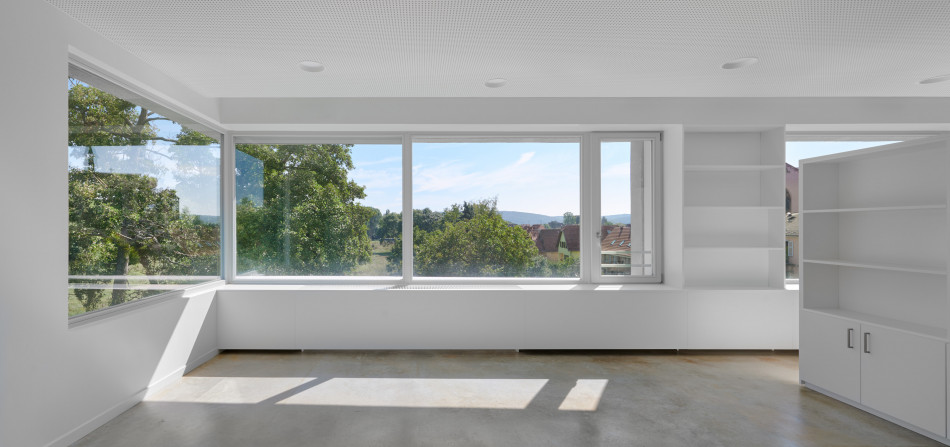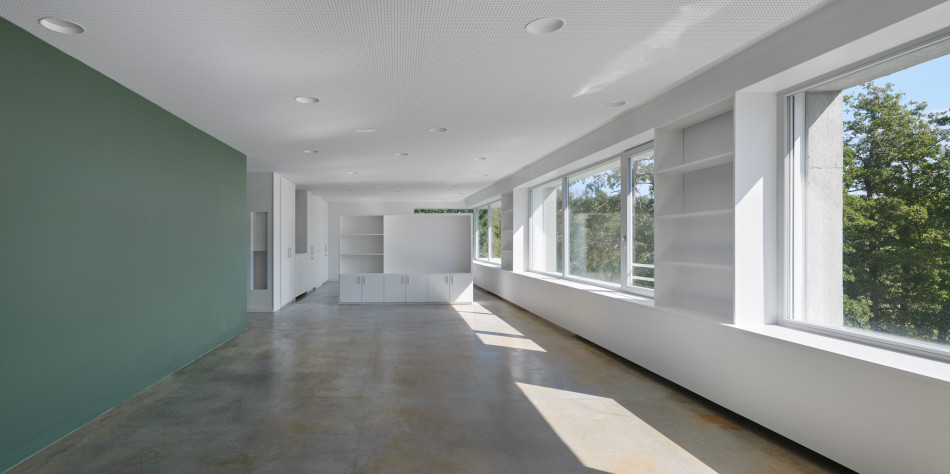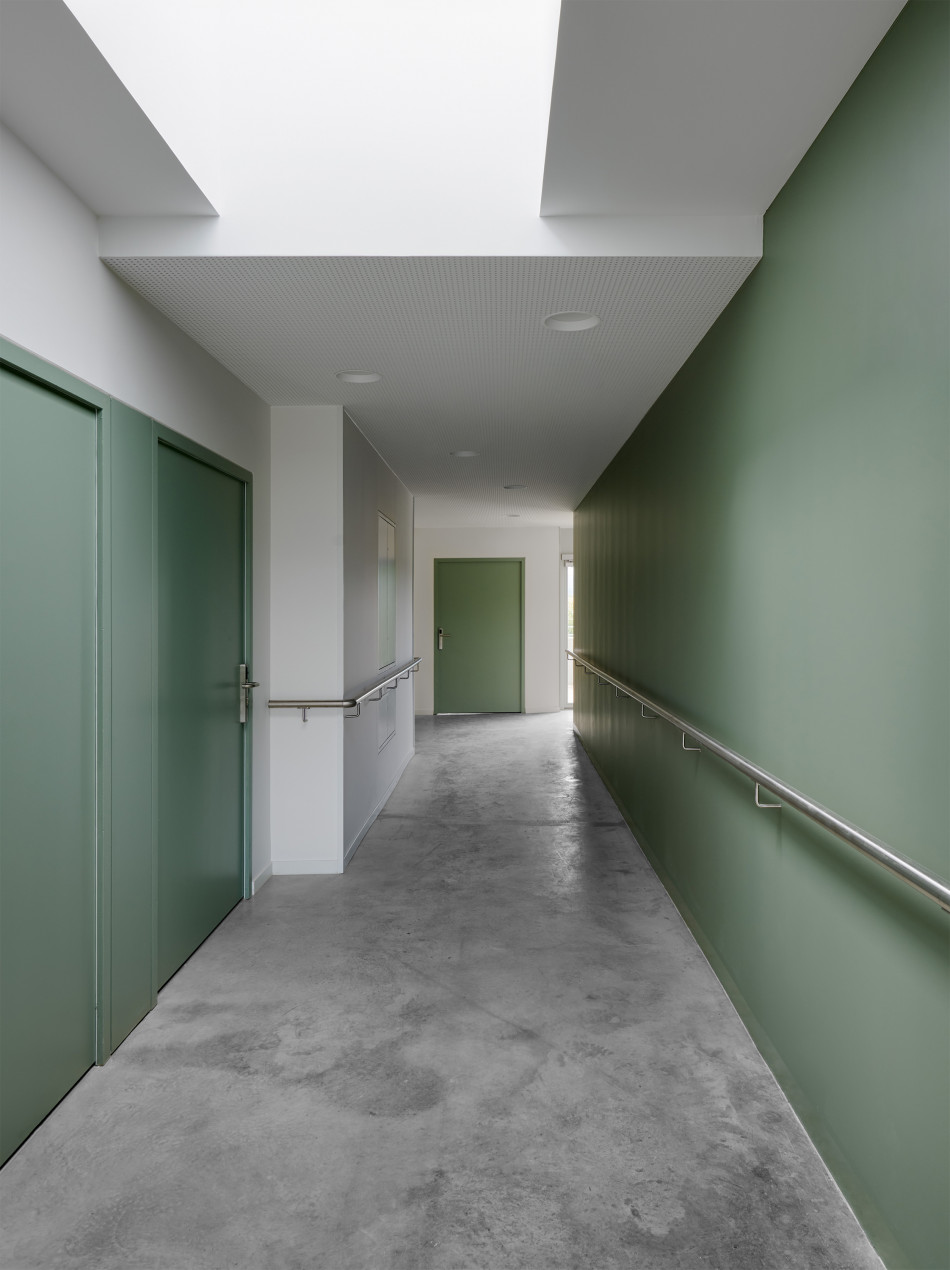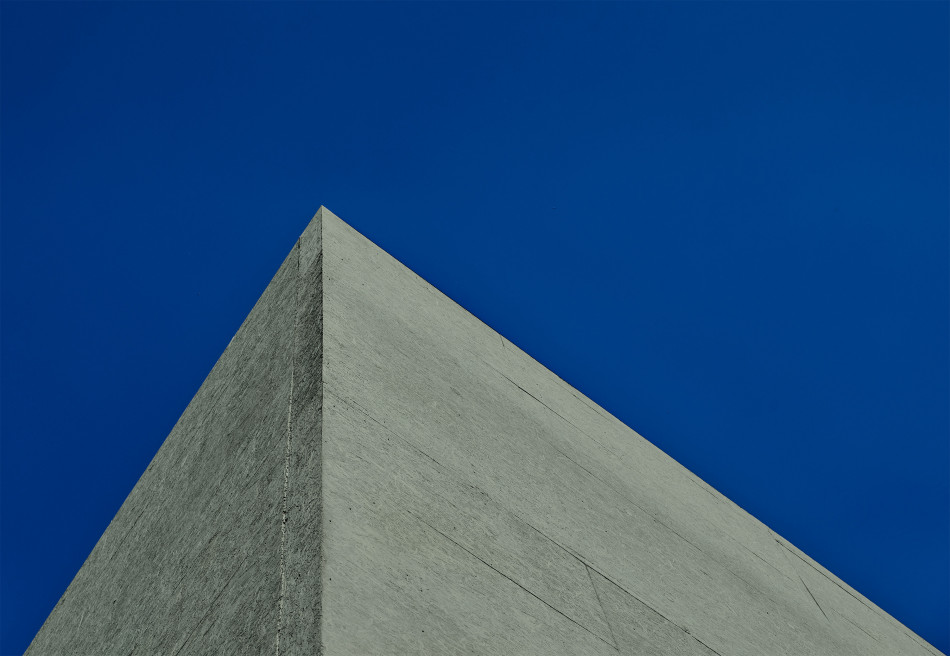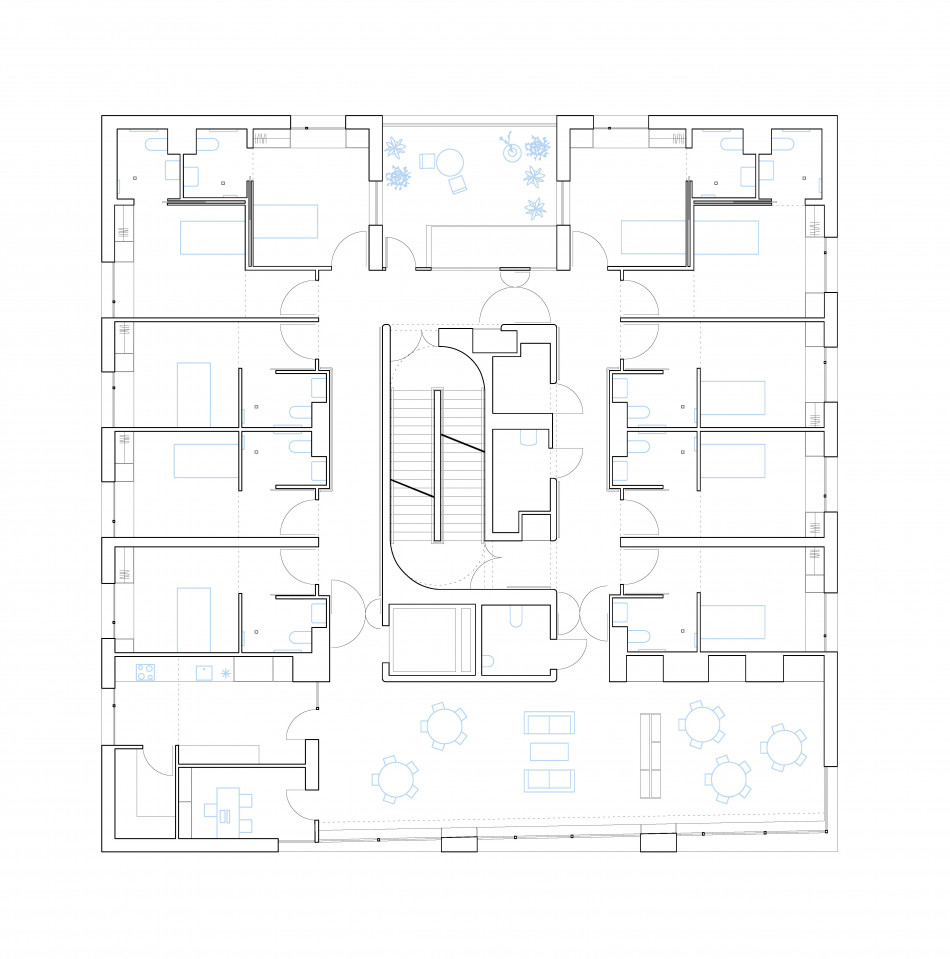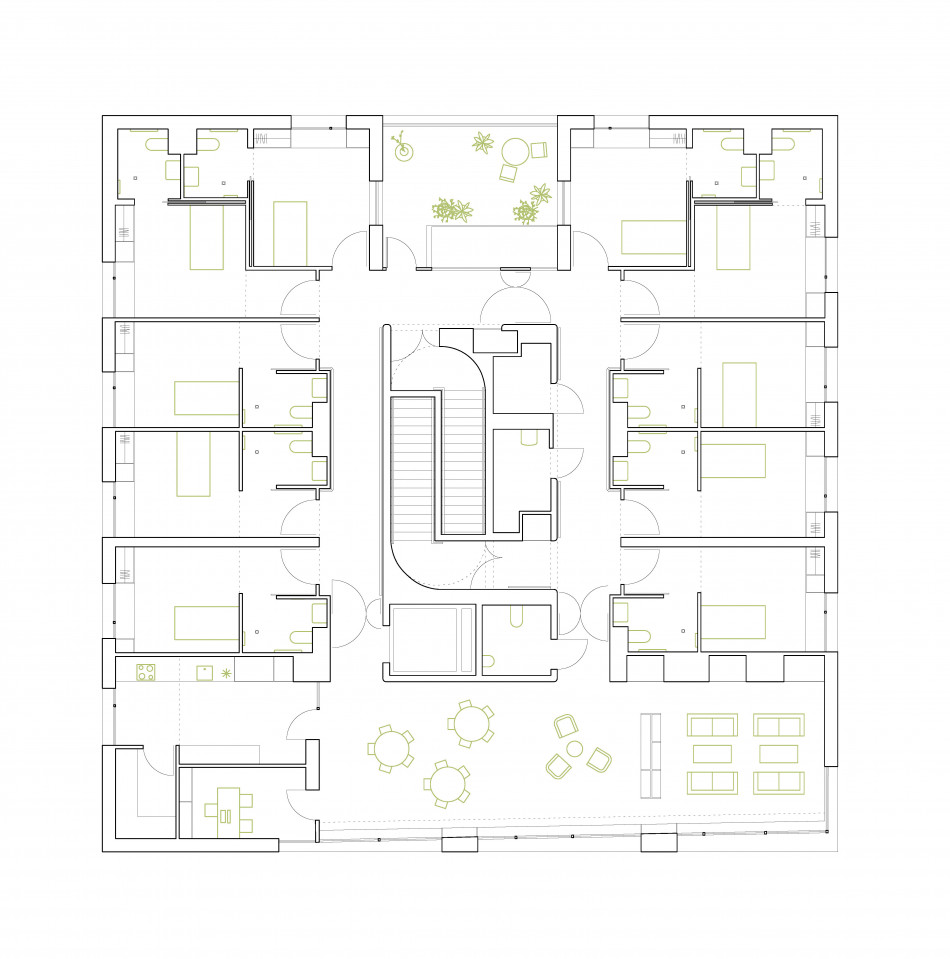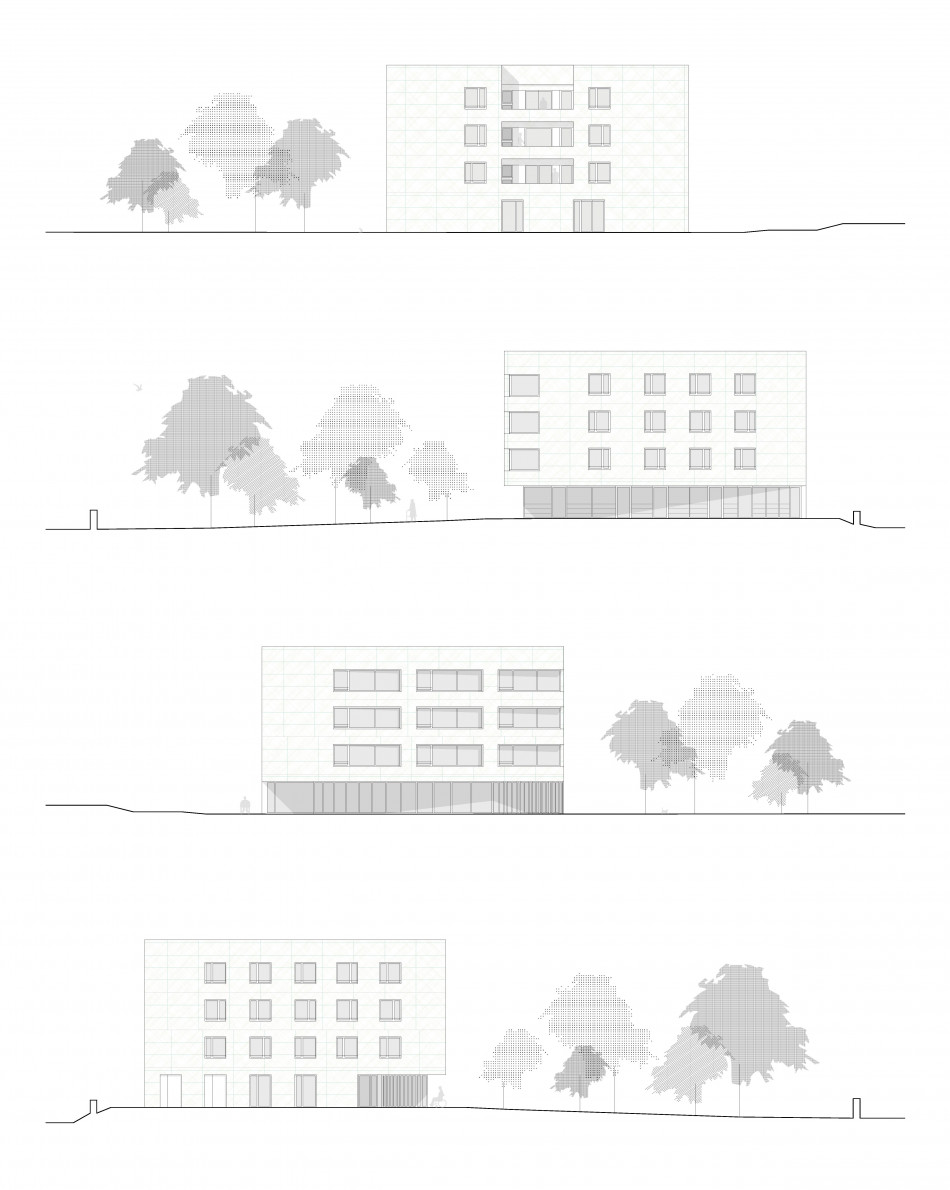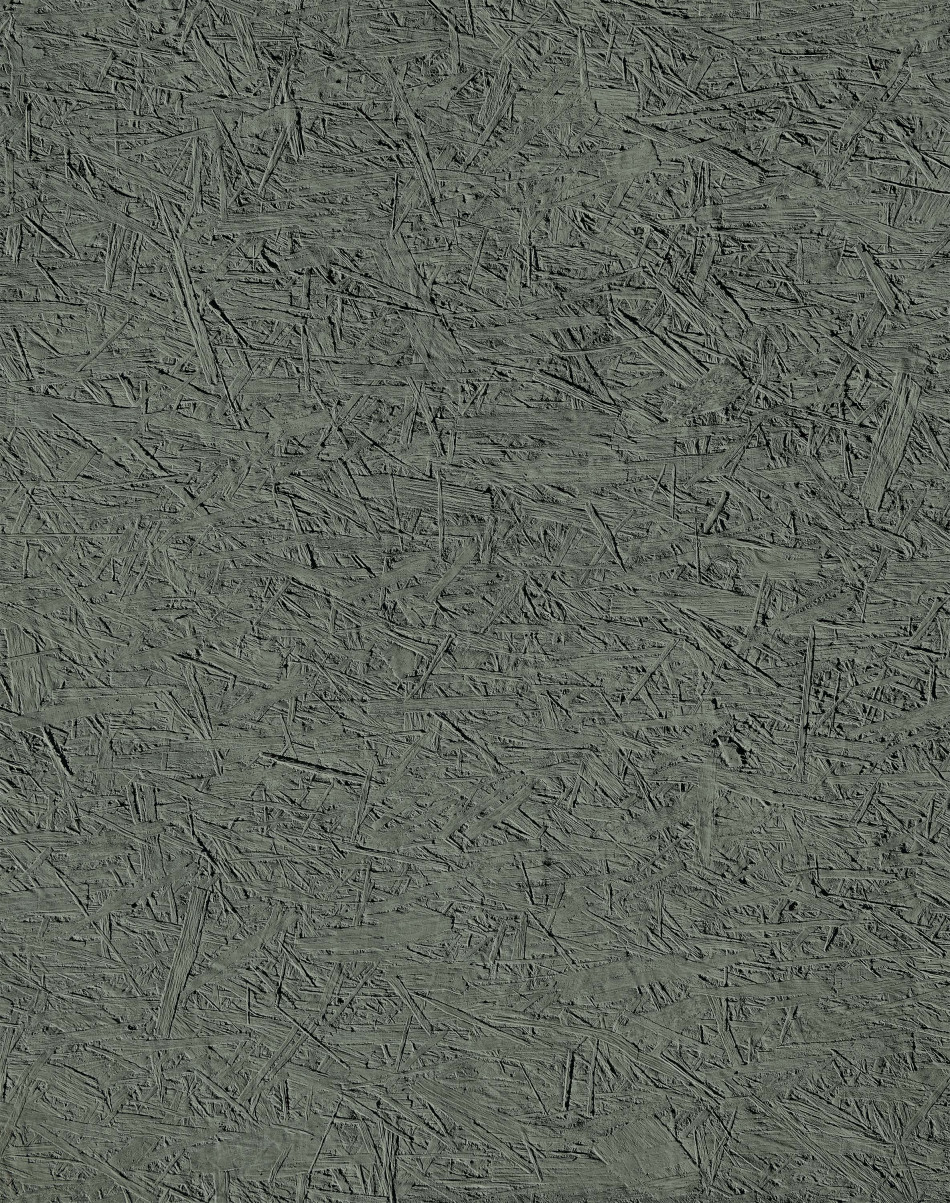Still
2022
‘Jeanne-Marie’ home for people suffering from mental disorders
Client : ‘Adèle de Glaubitz’ association
Cost : 3 093 022 euros
Area : 2 346 sq.m.

Located at the entrance to the Bruche valley, Still is a typical village in Alsace, nestling among the foothills of the valley, where woodland, clearings and running water create a soothing landscape. The home is for people with severe mental health needs and suffering from anxiety, displaying aggressive behaviour, or suffering from any other form of sensorial disorder, which means that the architecture must accurately match the needs of this specific public.
On the edge of a clearing, the square building nestles among the trees, opening out onto the landscape. The rough texture of the concrete, in a noticeably green tint, echoes the verdant surroundings and softens the strict positioning of the structure. The base of the building, broadly open onto the clearing, houses the common and shared areas. It pivots through the mass of the three higher levels, creating a broad overhang that lends a framework to the view. The overhang emphasises the compact volume of the three floors that accommodate the small living units. The floor-plan of the ordinary floors is absolutely identical on all three levels, so that residents can easily find their way around the different parts of the building. The only difference is that one wall in the common area on each level is a different colour. This arrangement, the strictness of the layout, and the use of colour all form part of the daily accompaniment of the patients. A standard floor comprises a common area, a terrace shared by everyone, and ten living units. The four facades are pierced according to the degree of privacy of the different areas (individual rooms or shared areas); they each look out onto a soothing element in the landscape.
The indoor areas have been designed in close collaboration with the association responsible for housing these patients, so that they match the residents’ needs as closely as possible. Thus lighting and views, colours and textures, acoustic arrangements and furnishings have all been designed with the everyday requirements of the place’s users in mind.



